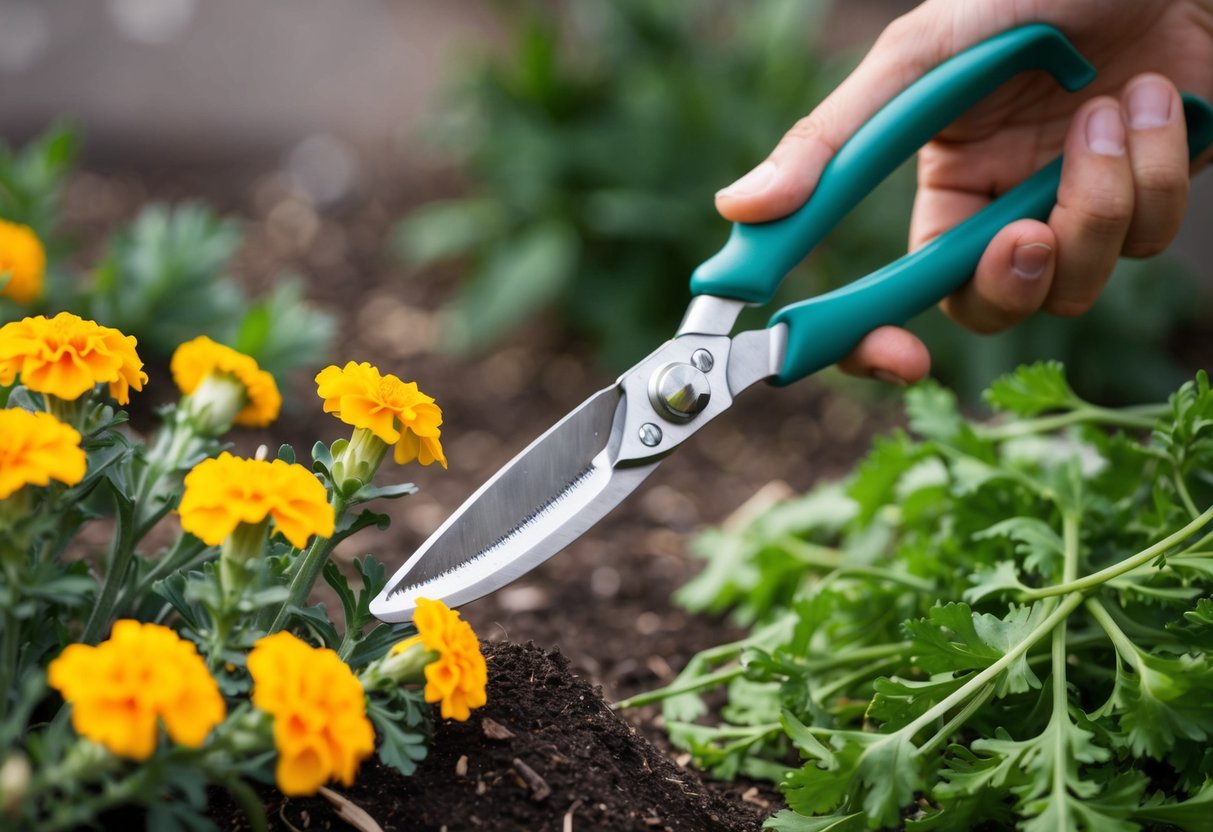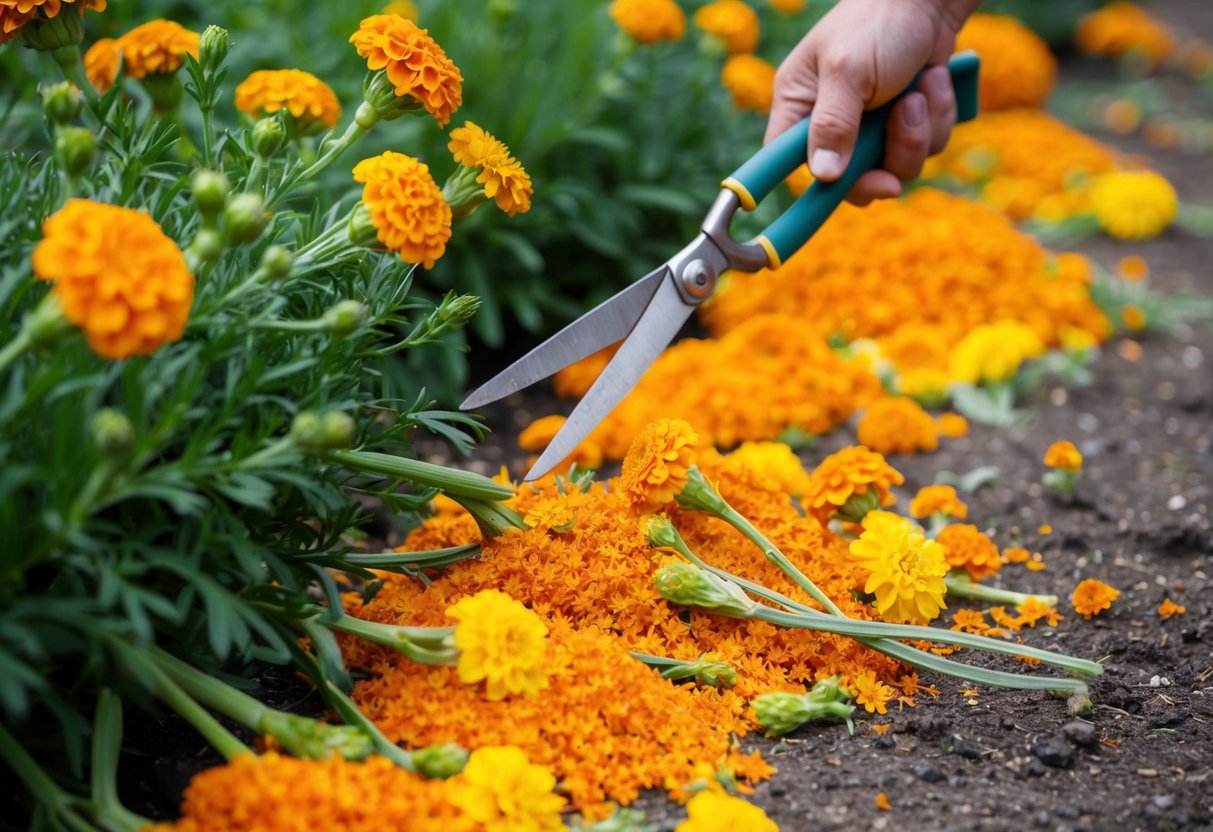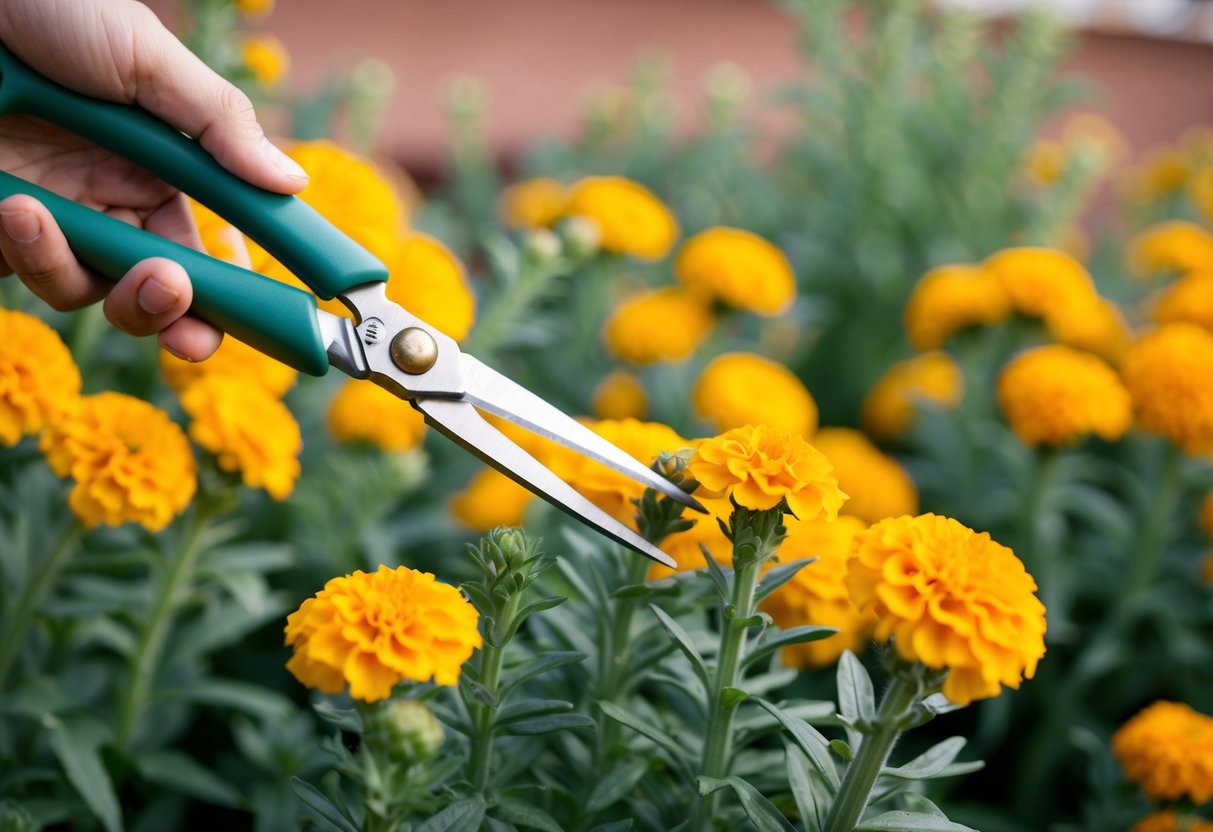Should Marigolds Be Cut Back? Tips for a Blooming Garden
If you’re wondering whether you should cut back your marigolds, you’re not alone. Yes, marigolds should be pruned regularly to promote better flowering and keep the plant healthy. By trimming them, you encourage more blooms and maintain a tidy appearance in your garden. Regular maintenance can result in healthier plants and a more vibrant display.

You might be surprised at how much a little trimming can enhance the beauty of your marigolds. Removing spent blooms can actually lead to more abundant flowering. Trimming is not just about looks; it can also prevent pests and diseases from taking hold. This simple practice can save you a lot of trouble down the road.
If you enjoy seeing your marigolds flourish, you’ll find that pruning is well worth the effort. It helps ensure that your garden stays lively and colorful throughout the season. Plus, it gives your plants the best chance to thrive and delight you with their bright, cheerful blooms. Heavy pruning can even refresh marigolds for another round of impressive growth.
Understanding Marigold Pruning

Pruning marigolds is crucial for encouraging bushier and healthy growth. By trimming them, you promote lateral branching, which results in a more vibrant display of blooms. There are various techniques to consider, each offering unique benefits.
Importance of Pruning Marigolds
Pruning helps marigolds thrive by removing dead or damaged parts and encouraging new growth. This process aids in maintaining the plant’s health and shape. Regular pruning also prevents pests and diseases by eliminating areas that may harbor them.
Another key aspect is deadheading, which involves cutting off spent flowers. This encourages the plant to focus its energy on growing new, vigorous blooms instead of producing seeds. As a result, you get a more prolonged and abundant flowering period.
Pruning promotes better air circulation around the plant, reducing the risk of mold growth. By ensuring adequate space for light penetration, you support stronger and healthier overall growth. It’s important to use clean and sharp tools to minimize damage and infection risk.
Different Types of Marigold Pruning Techniques
There are several techniques to consider when pruning marigolds. Pinching involves removing the tips of stems to encourage lateral branching, leading to a bushier plant. This technique can make the plant more robust and fuller.
Another method is trimming back leggy or straggly stems. Cutting them back helps maintain a tidy appearance and stimulates more blooms. Aim to trim about one-third of the stem to manage growth without stressing the plant.
Lastly, shaping involves evenly cutting around the plant to maintain a balanced look. This helps avoid uneven growth and ensures your marigolds look their best. Use precise cuts just above a set of healthy leaves to promote optimal regrowth.
The Right Time for Pruning Marigolds

Pruning marigolds is important to keep them healthy and blooming. Knowing when to prune helps you get the best results and maintain your plant’s appearance.
Best Time to Prune Marigolds
The best time to prune marigolds is during the early to late spring. At this time, they are entering their active growing season. Pruning during this period helps direct their energy toward new growth and upcoming blooms.
Evening is another good time to prune, as cooler temperatures can reduce stress on the plants. This timing can prolong the blooming period. By managing your pruning schedule around these times, you’ll help your marigolds stay healthy throughout their growing season.
Signs That Your Marigolds Need Pruning
Look for specific signs that show it’s time to prune your marigolds. Check for yellowing leaves, damaged stems, and spent flowers. Removing these allows the plant to direct energy into new growth.
If marigolds appear straggly or leggy, it’s time to tidy them up. Trim back stems that are too long. This keeps your plants looking balanced and healthy.
By understanding these signs, you can ensure that your marigolds continue to bloom beautifully and maintain a vibrant appearance throughout their life cycle.
How to Prune Marigolds Step by Step

Pruning marigolds helps keep them healthy and ensures they bloom beautifully. Using the right tools and following the correct steps makes the process easy and effective.
Selecting the Proper Tools for Pruning
Start by gathering the right tools. You’ll need pruning shears or bypass pruners for cutting, as they provide clean cuts that prevent damage. Gardening gloves protect your hands from scratches, while a disinfectant keeps your tools clean and prevents the spread of plant diseases.
It’s important to choose tools that are comfortable for you to handle. This will help make the pruning process quicker and safer. Clean and sharpen your pruners before you start to ensure the best results.
Keeping your tools in good shape means less strain on your plants and more successful pruning. Regular maintenance extends the life of your tools and keeps your marigolds looking their best.
Step-by-Step Pruning Process
Begin by identifying which parts of the marigold need trimming. Look for stems that are yellowing, damaged, or crossing each other. These areas can hinder growth and need attention. Using your pruners, make clean cuts just above a set of healthy leaves to encourage new growth.
Pinch off or cut any spent flowers to promote more blooms. This process involves locating the stem of each spent flower and removing it near its base. Cutting back leggy or straggly stems also helps maintain a tidy shape and encourages robust growth.
For best results, prune in the evening when it’s cooler. This helps reduce stress on the plant and can prolong the blooming period. Regularly pruning your marigolds keeps them attractive and flourishing.
Maintenance Tips for Healthier Marigolds

Keeping marigolds healthy involves regular care and attention. You should focus on removing any diseased materials, ensuring optimal growth conditions, and maintaining proper fertilization and watering practices.
Dealing with Diseased or Dead Plant Material
Regularly check your marigolds for any diseased or dead branches. Remove these parts to prevent the spread of diseases and pests. Use clean pruning shears and make cuts just above healthy leaves to avoid damaging the plant. Compost smaller, healthy clippings, but discard any diseased material to keep your compost clean. This helps maintain air circulation around the plant, which can reduce humidity and discourage fungal growth.
Optimizing Conditions for Vigorous Growth
Marigolds thrive in well-drained soil with full sun exposure. Up to 6-8 hours of sunlight each day is ideal for vigorous growth. Regularly check for crowded plant arrangements that might block light and airflow. If necessary, thin out crowded areas to improve air circulation. You can add organic matter or compost to enrich the soil. Maintaining low humidity levels around marigolds helps keep fungal diseases at bay.
Fertilization and Watering Practices
For robust marigolds, fertilize them every 4-6 weeks using a balanced, water-soluble fertilizer. Start with half-strength solutions to avoid over-fertilization, which can damage the roots. When it comes to watering, ensure the soil is always moist but not waterlogged. Early morning is an ideal time to water to allow the soil to dry throughout the day. A layer of mulch around the base can help retain moisture.
Frequently Asked Questions Excluded

When caring for marigolds, you might have some questions that aren’t covered often. Here, we’ve highlighted a few important areas that can sometimes be missed.
Timing for Pruning:
You should prune marigolds during the evening as it helps extend the blooming period. Cutting back spent blooms and leaves to about 1-2 inches above the soil can encourage more flowers.
Pruning Tools:
Choosing the right tools is key! Use sterilized shears for clean cuts. This reduces the chances of spreading diseases among plants. Make sure to cut just above a set of healthy leaves, as this is where new growth will appear.
Heavy Pruning:
If your marigold has stopped blooming, it might be time for heavy pruning. Remove at least two-thirds of each stem to encourage fresh growth.
Watch for Pods:
Keep an eye out throughout the growing season for any flower pods that need removing. This helps in maintaining a tidy appearance and constant blooming.
Remember to make sure the plants receive enough water and sunlight, along with regular pruning, to keep them thriving and healthy!







